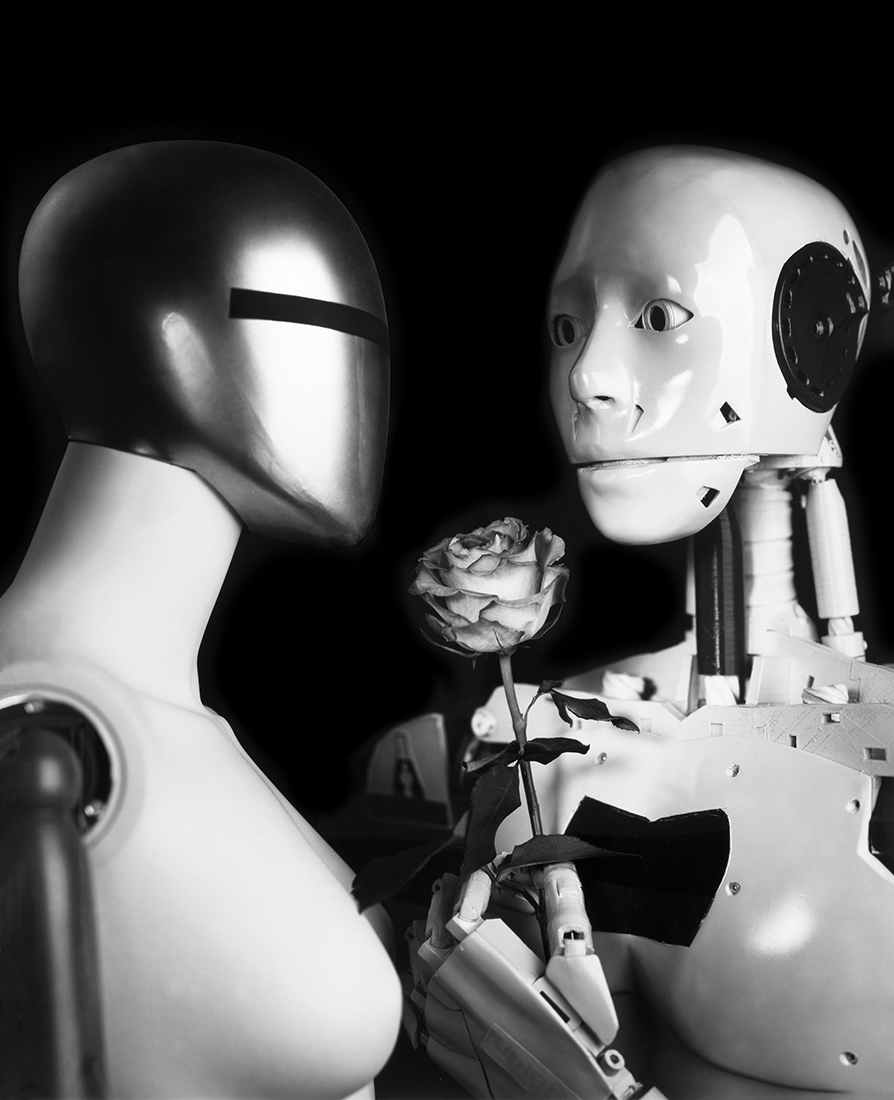Conceptual: Honorable Mention 2023 (professional)
AI-Robot – Love; From the Series "AI-Robot – Artificial Intelligence" by Josef Dreisörner (Germany)
ENTRY DESCRIPTION
Emotions such as fear, joy, sadness, or being in love, which are connected with certain facial expressions or physical reactions, can be learned by AI systems through pattern recognition. AI systems have no emotions of their own, but can display the emotions they have learned. For real feelings of their own, however, they lack the biochemical, hormonal processes that occur in a human body, during an emotion (as of 2023). That humans can develop strong emotional bonds with robots or machines of all kinds is well known. The progressive development of sex robots is controversially discussed among experts and ethicists.
Camera type: Klimsch Praktika Process Camera
Lense: Rodenstock Klimsch Apo-Ronar 1:9 f=600mm
Film Format: 50×60 cm (20x24 INCH)
Direct exposure on a black and white positive photo paper
AUTHOR
When encountering the works of Josef Dreisörner, one discovers an artistic position in which conceptual creativity is combined with craftsmanship. Just as the act of creating a picture is an active process, so is the process that his pictures set in motion in the eye of the beholder. Seeing goes beyond simple representational recognition to become a productive process of perception.
His KLIMSCH UNIKAT portrait shots yield perspectives of the human visage with downright surgical precision – an aesthetic approach which may feel alien at first, but is intentional in its expressiveness. Although still committed to high aesthetic standards, in most Josef Dreisörner’s still lifes do not focus on aesthetic issues. Rather, it is his concern as an artist to draw the viewer‘s attention to socially relevant themes. The choice of this subject must indeed be considered as unusual. The fact that the viewer initially reacts in a disturbed manner is a matter of calculation. Only a longer engagement with the work reveals on the one hand the theme that moves the artist, on the other hand it deliberately leaves room for interpretation and should invite further discussion.
Such pictorial statements are mainly realised by so-called large format cameras. Of particular note is the Klimsch Praktika reproduction / process camera built in 1957 with a film format of up to 50×60 cm (20×24 Inch). Photographs are taken analogously on film or with direct exposure on black-and-white positive photo paper. When using the positive photo paper the captured image cannot be reproduced in analog photographic technology, and there is no option of analogue or digital post-processing. The captures on film are realized by means of the Palladium /Platinum Print process.
back to gallery
